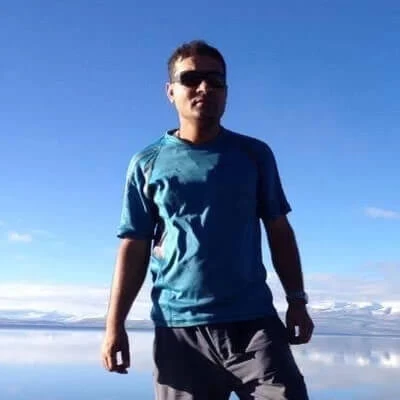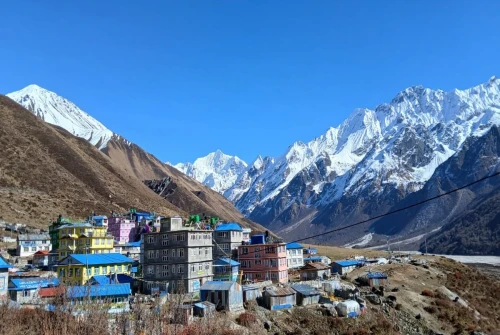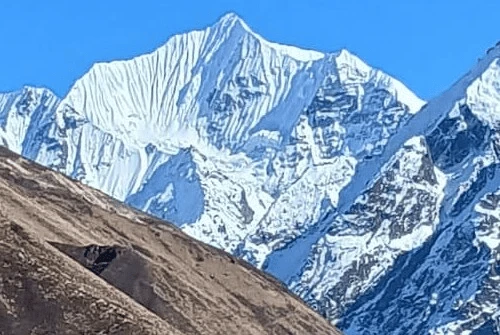Different Types Of Trekking Permits In Nepal
In Nepal, there are four types of trekking permits. To enter each trekking location various trekking permits are required. We detailed all of the permissions and their costs, as well as which permits are required for each hiking location.
1. TIMs E-Card Permit
E-TIMS Card is an abbreviation for Trekkers' Information Management System, which was established jointly by the Nepal Tourism Board (NTB) and Trekking Agencies Association of Nepal (TAAN) to protect trekkers' safety and security and avoid illegal trekking activities in Nepal. Trekkers have been issued TIM cards since January 1, 2008.
E-TIMs Card is the most recent trekking permit, which went into force on April 1, 2023. E-TIMs permits are not accessible for free individual trekkers (FITs), but only for group trekkers who use the services of government-authorized trekking organizations. Previously, the Nepal Tourist Board distributed Tims Permits to Free Individual Trekkers directly by filling out a form accessible at the Tourism office in Brikutimandap. Since April 1st, all trekking regions in Nepal require an E-TIMs Card, except in limited areas where trekkers have specific permits from the Department of Immigration Office.
For foreign hikers, the TIMs Card costs NPR 2000 per person, whereas SAARC (South Asian Association for Regional Cooperation) members pay NPR 1000. Any trekker who is seen traveling on approved trekking routes without a guide or TIMS card gets an Rs12,000 punishment.
2. Restricted trekking permit (Special Permits)
A special permit is another term for a restricted trekking permit. Even though trekkers in Nepal are permitted to travel as FIT (Free Individual Trekkers) or in groups of varying numbers. However, there are some trekking areas designated as 'Restricted Areas' or 'Controlled Areas' that are closely monitored by the Nepalese government, and hence FITs are completely prohibited. The Department of Nepal Immigration only issues restricted hiking permits through licensed trekking offices like Himalayan Wander Walkers (HWW). The restricted area permit (RAP) fees are listed in the table below.
Restricted Areas and Permit Fees for Trekking in Nepal
1. Upper Mustang
USD500 per person (first ten days)
USD 50 per person/day (after the first ten days)
2. Upper Dolpa
USD500 per person (first ten days)
USD 50 per person/day (after the first ten days)
3. Gorkha Manaslu Region
September - November: USD 100 per person each week, USD 15 per person/day (after one week)
December until August: USD 75 per week per person, USD 10 per person/day (after one week)
4. Humla
USD 50 per person per week
USD 10 per person/day (after one week)
5. Taplejung (Olangchung Gola and Kanchenjunga)
USD 20 per person every week (for the first four weeks)
USD 25 per person every week (after 4 weeks)
6. Lower Dolpa Area 6
USD 20 per person, per week
USD 5 per person/day (after 1 week)
7. Dolakha (Lapche Valley and Tashi Lapcha Pass)
USD 20 per person/week
8. Gorkha Tsum Valley Area
September - November: USD 40 per person/week, USD 7 per person/day (after 1 week)
December to August: USD 30 per person each week, USD 7 per person/day (after 1 week)
9. Sankhuwasabha (Makalu Area)
USD 20/week (for the first four weeks)
USD 25 per person every week (after 4 weeks)
10. Solukhumbu (Thame and Tashi Lapcha Area)
USD 20/week (for the first four weeks)
USD 25 per person every week (after 4 weeks)
11. Rasuwa (Rasuwaghat and Thuman Area)
USD 20/week
12. Manang (Nar and Phu Valley)
September - November USD 100 per person each week, USD 15 per person/day (after one week)
December -August: USD 75 per week per person, USD 15 per person/day (after one week)
13. Bajhang (Mount Saipal Area) USD 90 per person/week for the first week
USD 15 per person/day (after 1 week)
14. Mugu (Mugum Karmarong Rural Municipality) USD 100 per person/week
USD 15 per person/day (after 1 week)
15. Darchula (Api and Nampa Himal Area) USD 90 per person/week
USD 15 per person/day (after 1 week)
What documentation is the trekking firm necessary to receive a Restricted Area Permit?
Only authorized trekking companies can apply for restricted area trekking permits from the Department of Immigration, along with the appropriate papers.
- Passport photocopy
- Copy of valid visa (enough to cover hiking days)
- Trekker Name Lists Trekking Program Schedule
- Agency Agreement Guarantee Letter with Agency Tax Clearance Trekking Agency Certificate
- Documents about hikers' (foreign nationals') insurance and Nepalese workers accompanying the treks
- A permit from the Ministry of Tourism, Culture, and Civil Aviation to conduct a trekking company. A permit from Nepal Rastra Bank to exchange foreign currencies.The trekking program schedule (day-by-day itinerary)
- Registration Permanent Account Number Certificate
- Bank payment voucher (fees) for permits
3. National park permit
Another permission necessary for hiking in Nepal is a national park permit. There are 12 National Parks and one hunting and wildlife reserve. The Department of National Parks and Wildlife Conservation (DNPWC) oversees all of this. DNPWC was founded in 2037 BS (1980 AD) to manage and maintain Nepal's wildlife and biodiversity. These protected areas encompass the ecosystems and landscapes of the country's high mountain, hilly, and plain regions.
The Department of National Parks and Wildlife Conservation (DNPWC), headquartered within the Nepal Tourism Board headquarters, issues national park permits at Bhrikuti Mandap.
What documentation is the trekking firm required to receive a Restricted Area Permit?
The Department of the Immigration office is the only place where approved trekking organizations may request restricted region trekking permits together with the appropriate paperwork.
- Passport photocopy
- Copy of valid visa (enough to cover hiking days)
- Trekker Name Lists Trekking Program Schedule
- Agency Agreement Guarantee Letter with Agency Tax Clearance Trekking Agency Certificate
- Documents about hikers' (foreign nationals') insurance and Nepalese workers accompanying the treks
- A permit from the Ministry of Tourism, Culture, and Civil Aviation to conduct a trekking company. A permit from Nepal Rastra Bank to exchange foreign currencies.
- The trekking program schedule (day-by-day itinerary)
- Registration Permanent Account Number Certificate
- Bank payment voucher (fees) for permits
3. National park permit
Another permission required when trekking in Nepal is a permit for a national park. In addition to one hunting reserve and one wildlife reserve, there are 12 national parks. The Department of National Parks and Wildlife Conservation (DNPWC) keeps an eye on all of them. Nepal's wildlife and biodiversity were managed and conserved by the DNPWC, which was founded in 2037 BS (1980 AD). These protected areas include the country's high mountain, hilly, and plain regions' ecosystems and landscapes. The Department of National Parks and Wildlife Conservation (DNPWC), which is housed in the Nepal Tourism Board headquarters, issues national park permits at Bhrikuti Mandap.
5. Rural municipality trekking permit
The administrative division of Rural Municipality (RM) was founded in 2017 and took the role of the previous village development committees. There are 460 rural municipalities as of right now. Out of all the rural municipalities, the Khumbu Pasang Lhamu Rural Municipality is the only one that has enforced the law requiring trekking permits for hikers in the Khumbu region as of 2018. All hikers in the Everest region carried the ard permit before the implementation of TIMS. Every person in Khumbu Pasang Lhamu Rural Municipality paid NPR 2000.
The following documentation is requested when booking a trek or trip with All Nepal Hiking:
- Travel documents, such as a passport
- a copy of a valid passport
- a current passport photo
- Your contact information
- complete travel and health insurance paperwork
- Your flight information for both your arrival and departure




